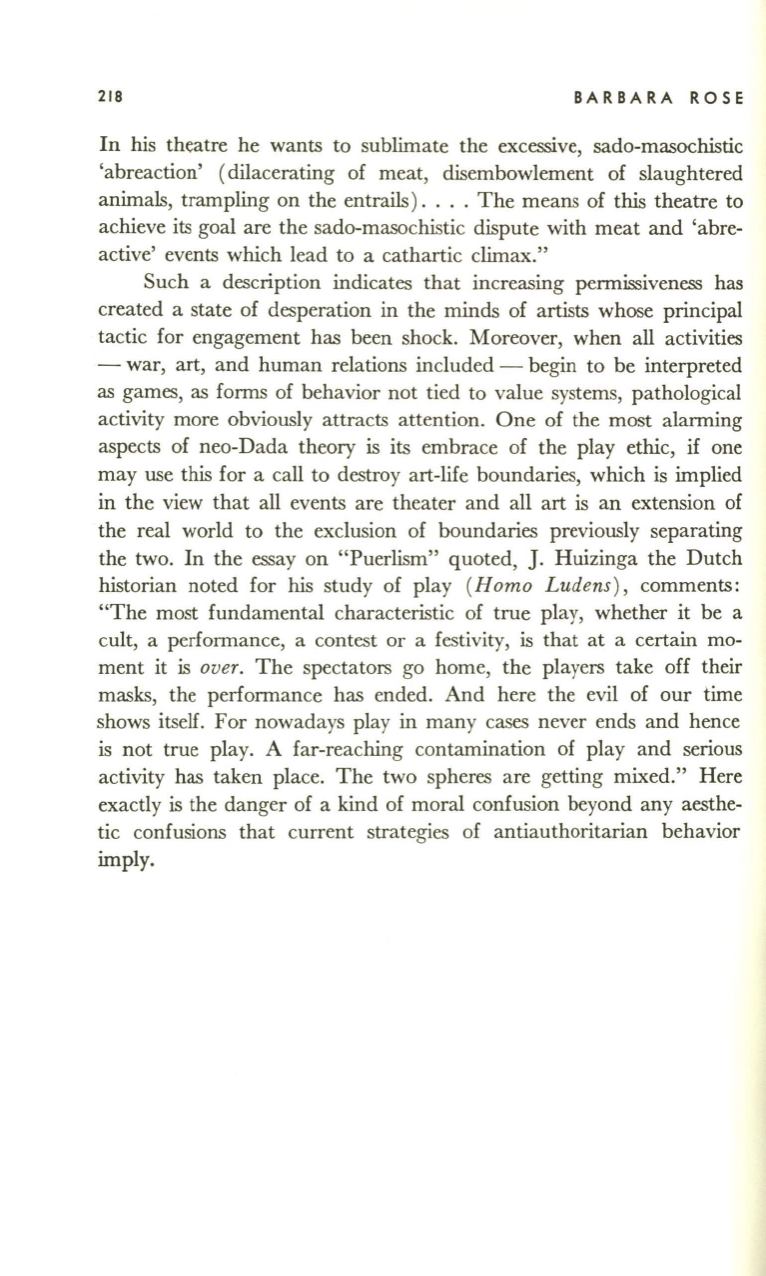
218
BARBARA ROSE
In
his theatre he wants to sublimate the excessive, sado-masochistic
'abreaction' (dilacerating of meat, disembowlement of slaughtered
animals, trampling on the entrails) .... The means of this theatre to
achieve its goal are the sado-masochistic dispute with meat and 'abre–
active' events which lead to a cathartic climax."
Such a description indicates that increasing permissiveness has
created a state of desperation in the minds of artists whose principal
tactic for engagement has been shock. Moreover, when all activities
- war, art, and human relations included - begin to be interpreted
as games, as forms of behavior not tied to value systems, pathological
activity more obviously attracts attention. One of the most alarming
aspects of neo-Dada theory is its embrace of the play ethic, if one
may use this for a call to destroy art-life boundaries, which is implied
in the view that all events are theater and all art is an extension of
the real world to the exclusion of boundaries previously separating
the two.
In
the essay on "Puerlism" quoted,
J.
Huizinga the Dutch
historian noted for his study of play
(Homo Ludens)
,
comments:
"The most fundamental characteristic of true play, whether it be a
cult, a performance, a contest or a festivity, is that at a certain mo–
ment it is
over.
The spectators go home, the players take off their
masks, the performance has ended. And here the evil of our time
shows itself. For nowadays play in many cases never ends and hence
is not true play. A far-reaching contamination of play and serious
activity has taken place. The two spheres are getting mixed." Here
exactly is the danger of a kind of moral confusion beyond any aesthe–
tic confusions that current strategies of antiauthoritarian behavior
imply.


